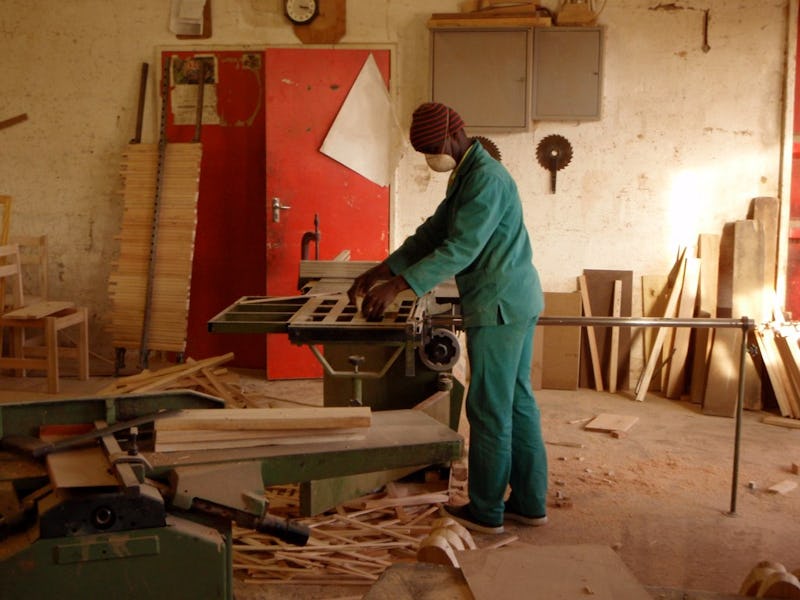Homes Will Be Built With Energy-Saving "Nanowood" In A Year, Says Creator
Knock on nanowood.

Insulating buildings is a must for people living in areas that get swelteringly hot during the summer or bitterly cold in the winter. This involves stuffing a structures’ walls with things like spray foam — a plastic material — to maintain a moderate temperature inside. But Many insulation materials are created with a cocktail of chemicals that can be potentially harmful to people and cannot be recycled.
An international group of scientists discovered a renewable and environmentally-friendly insulation tool could be made from a material humans have used for millennia: wood. All they had to do was remove a naturally occurring polymer called lignin from inside the lumber. The result created what the group has called “nanowood,” a green building and insulating material that Liangbing Hu, the principal investigator of this research, tells Inverse will be used for construction in as little as a year.
“When you remove this yellowish-component [lignin], the wood is still a piece of wood but it becomes completely white,” Liangbing Hu, an assistant professor at the University of Maryland, tells Inverse. “It also becomes much lighter because we’re removing material from the wood and it becomes an excellent insulator. So you can use it for the walls of your home to save energy on air-conditioning and heating.”
In a paper published in the journal Science Advances, Hu and his colleagues detail how they made a few minor changes to a technique widely used by the paper industry to create their nanowood.
A plank of nanowood.
Hu, who also works for the startup Invent Wood, described this approach as being akin to soaking a dirty T-shirt to remove all the grime stuck inside of the fabric.
“We soak the wood in a bath and boil the water and all of the lignin leaks out,” explained Hu. “I really don’t know why people haven’t done this before, the paper industry has been using this process for years. But once [paper manufacturers] take the lignin out they stir the wood and completely destroy its structure. In our case we don’t stir it to keep the wood structure, that turns out to be the single trick which is fundamentally important in making nanowood.”
Tian Li (left) and Liangbing Hu (right) demonstrating their nanowood product.
Tests have shown the invention is 30 times stronger than common thermal insulation materials, all while exhibiting high-performance insulation. This means constructing homes out of nanowood would eliminate the need to add additional products to repel outside temperatures.
The group made use of basswood for their experiment, which is known to grow fairly rapidly, up to twice the annual growth rate of American beech trees. This makes nanowood both a recyclable and renewable building material.
While wooden homes might not be exactly how many of us picture future cities, incorporating nanowood into construction will reduce the carbon-footprint caused by temperature control with a recyclable product that is simple to manufacture.
The saying will be, “knock on nanowood” soon enough.